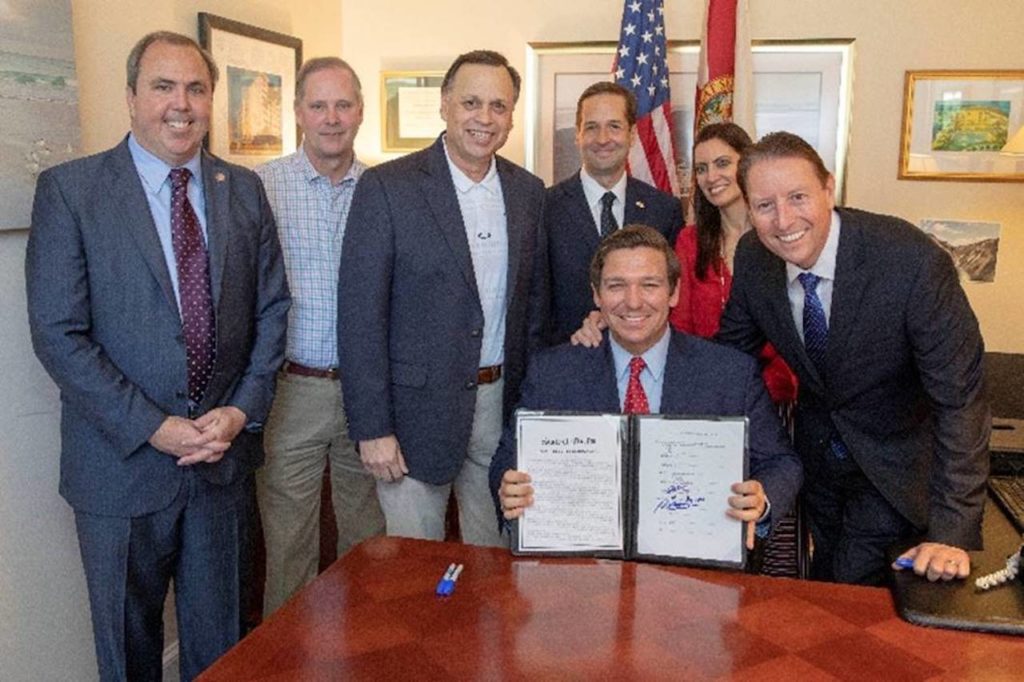Governor Ron DeSantis today signed CS/SB 7068: Transportation. This bill establishes three regional task forces to study Multi-use Corridors of Regional Economic Significance Programs within the Florida Department of Transportation (FDOT), which will be the state’s most significant infrastructure-building project since the 1950’s. While these corridors are to address rural infrastructure needs across the state, the corridor task forces will stress collaboration and will be modeled after the Wekiva Parkway (State Road 429), which created much-needed regional road infrastructure while helping to protect the natural resources surrounding the Wekiva River.
“Florida is a vibrant state that continues to grow and requires the development of an adequate infrastructure network that benefits not only the 21 million residents but the 120 million visitors we see each year,” said Governor DeSantis. “These infrastructure improvements will be built with great sensitivity toward the protection of the environment and there are mechanisms within the legislation that help ensure that occurs. We have a great precedent already with the Wekiva Parkway in the Central Florida Beltway that is a passageway through the environmentally sensitive Wekiva River Basin area and I am confident we will be able to manage this effort with equal or better care.”

“Infrastructure is more than traditional transportation elements including roads, bridges, seaports and airports,” said Senate President Bill Galvano. “Infrastructure also includes utility and communication resources that provide access to clean water and reliable broadband connectivity. I appreciate the hard work of Senator Tom Lee who developed this legislation and successfully advanced it through the legislative process. I am grateful to Governor DeSantis for partnering with the Florida Legislature to embrace an innovative approach to infrastructure that will enable Florida to strategically plan for future population growth, while at the same time revitalizing rural communities, protecting our unique natural resources, and enhancing public safety.”
“This legislation is a long-term investment that will provide numerous benefits to our state infrastructure,” said Senator Tom Lee. “Regional connectivity not only enhances trade and tourism, but also mitigates congestion and provides additional evacuation routes. For residents in rural areas of our state, investment in broadband, water, and sewer systems will improve the quality of life and the preservation of natural resources. With this legislation signed into law today, we are taking a huge step forward in our work to sustain the historic rural communities have powered Florida’s economy for generations.”
The signing of this bill immediately authorizes the creation of task forces that will focus on the advancement of construction in three identified infrastructure corridors. They are listed below:
- Southwest-Central Florida Connector (Collier County to Polk County)
- Suncoast Connector (Citrus County to Jefferson County)
- Northern Turnpike Connector (northern terminus of the Florida Turnpike northwest to the Suncoast Parkway)
During the initial development phases, FDOT will appoint task force members for each corridor comprised of representatives from state agencies, environmental entities and other stakeholders to evaluate and coordinate corridor analysis, environmental/land use impacts, and other pertinent impacts. The results of these analyses will be summarized in a report that is to be submitted to the Governor and the Legislature in October 2020.
The bill also creates the construction workforce development program as a job development tool to address the current construction labor shortage and provides $2.5 million annually over the next three years to support the program. The bill also outlines the need to address improve existing rural roadways, especially in the hard hit communities impacted by Hurricane Michael, by increasing the annual allocation to the Small County Outreach Program (SCOP) and Small County Road Assistance Program (SCRAP).
For a PDF copy of the transmittal letter, click HERE.
